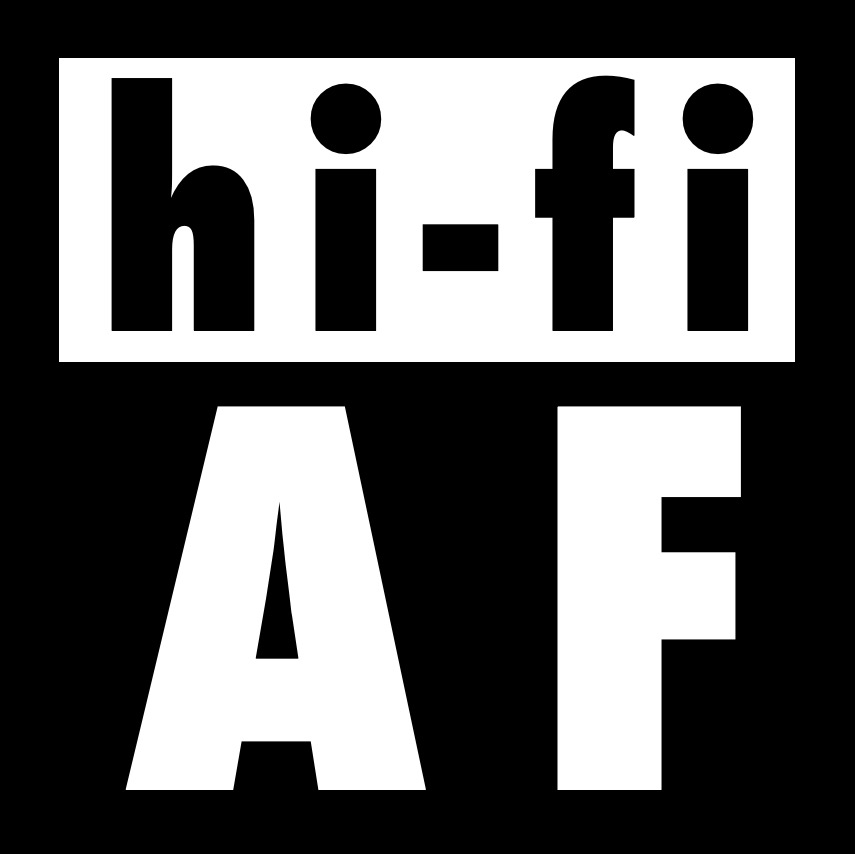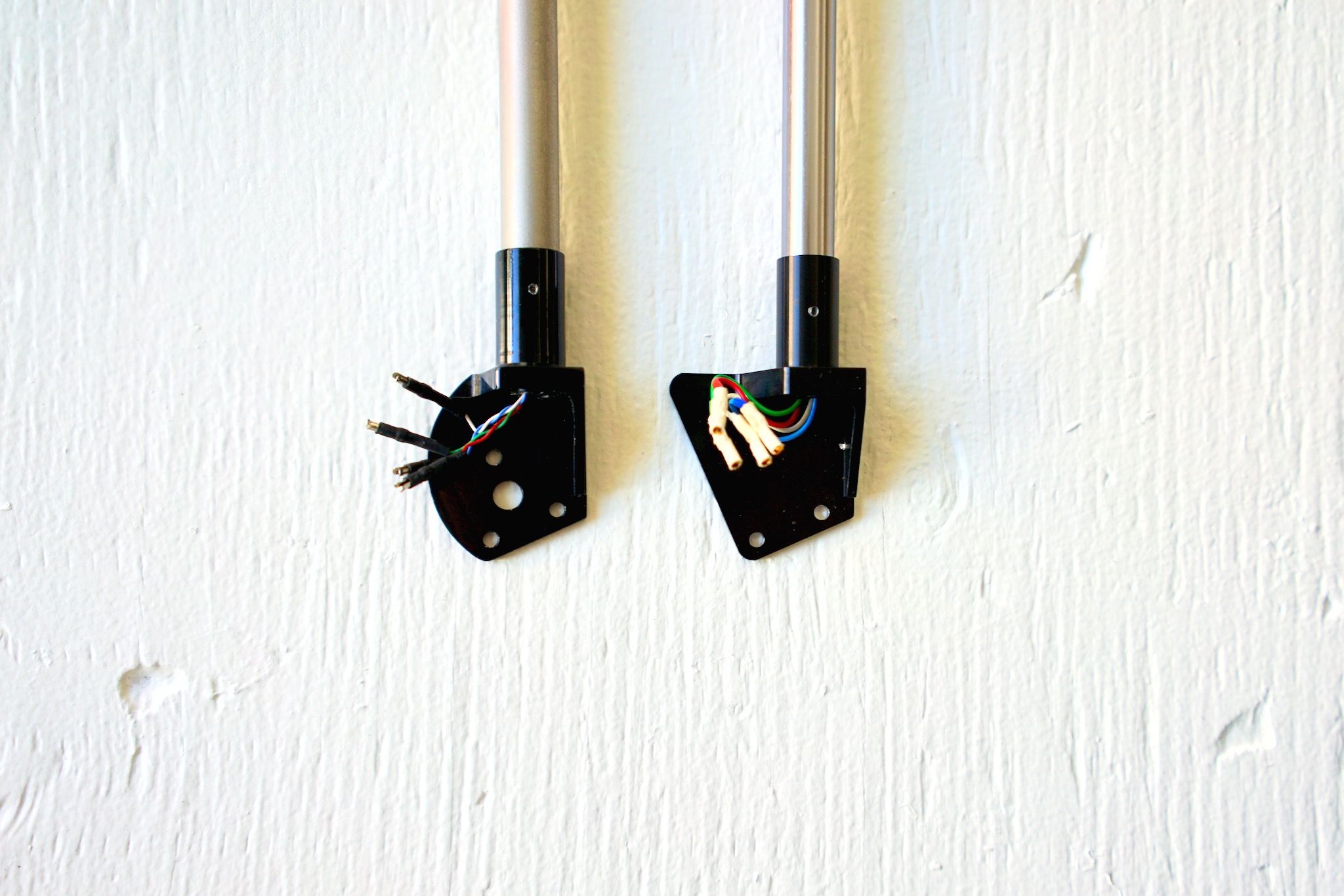LP12MF Listening Test: Tiger Paw Javelin Tonearm
In the latest edition of the LP12 Modification Frenzy, I listen to the effects of swapping my Linn Ekos 2 tonearm for a Tiger Paw Javelin tonearm. I’ve yet to write my post about installing the Javelin, since it was quite complicated and I don’t yet feel like I really have a grasp on it; I’ll add a link here when I do. In the meantime, you can check out my listening methodology here. Full listening impressions are below. Digestible, numerical summaries of all my listening tests are here.
tl;dr
I always fear the tests when I really want something to sound amazing. I love Tiger Paw products. I love the idea of the Javelin. I’ve wanted one for a few years, but since only 30ish of them were ever produced, I figured I’d never get one — and indeed bought an Aro based on that assumption. But then I found one, bought it… and started to wonder: hmm, what if it’s not good?
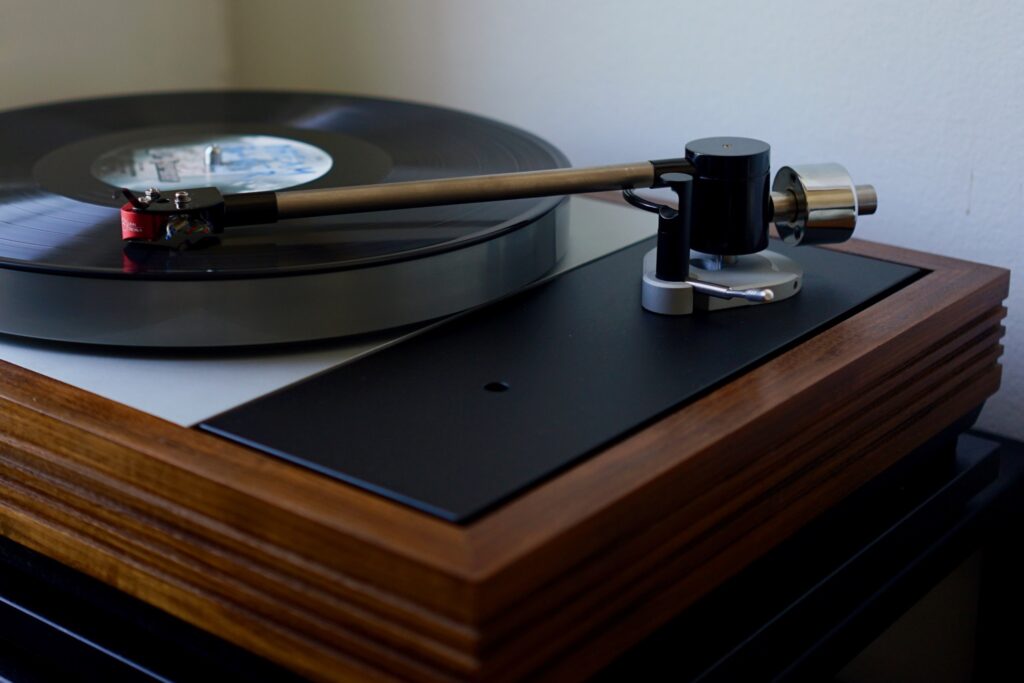
Well, I needn’t have feared. The Javelin is amazing. The thing I kept hearing about the Aro (on which the Javelin is based) versus the Ekos is that the Aro has less slam, less bass, and less of a dynamic presentation. So I worried in particular that “slam” tracks like “Panda” and “Halleluwah” would sound weak and thin. Far from it. The Javelin presents a total goldilocks situation. It gives up absolutely nothing to the Ekos in terms of bass drive or slam. (Indeed, if anything it has even more slam in store.) But it also adds a lot: it has more “splash,” more high-end sizzle, it does textures better, it gets things in clearer focus, and it projects a wider sense of space.
Six of my twelve tracks sounded better with the Javelin. The biggest leap was made by Pentangle’s “Let No Man Steal Your Thyme,” which is a “texture” track — a testament to the Javelin’s strength with detail, tone, and timbre. But the slam tracks were amazing, too: I get very excited about Can and Dungen below.
Strangely, two tracks sounded a bit worse, including one that sounded way worse — Yo La Tengo’s “Stockholm Syndrome.” I can’t really explain this. I’d reach for the usual, “Well, it’s just revealing the weaknesses in the recording,” but I don’t think that really makes sense here, since the Javelin did wonders for some pretty spotty pressings, like the Pentangle Reprise. So I’m just not sure what happened.
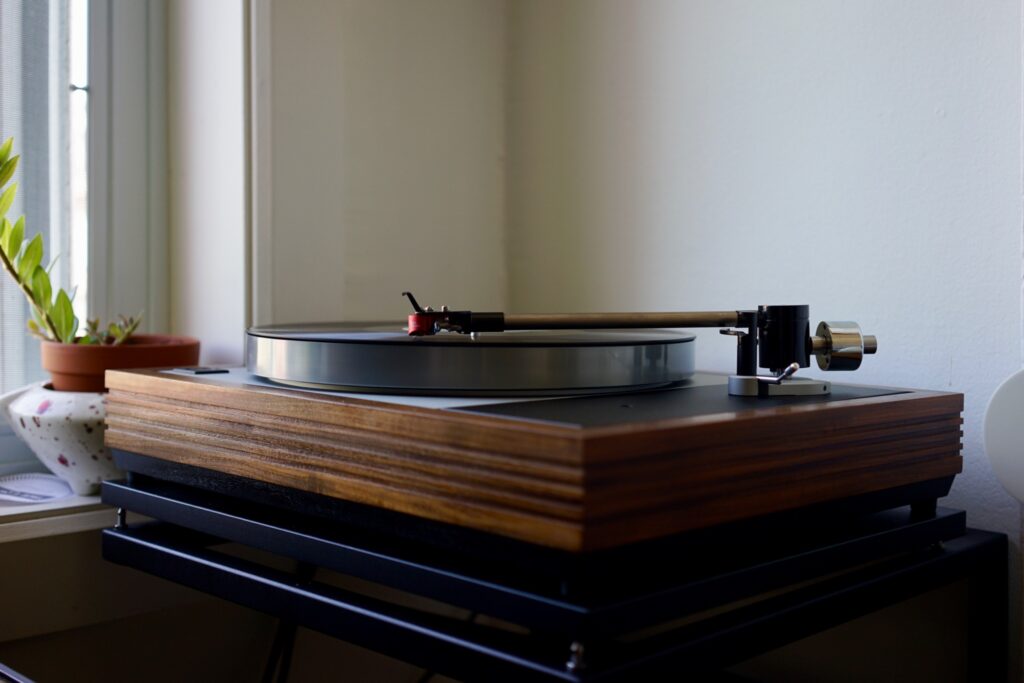
According to my numerical ranking system, the Javelin only made a 1.6% overall improvement — pretty slight. That’s down to the 15% hit that the Yo La Tengo track delivered, and to the fact that things were sounding extraordinarily good before I mounted it. Tiny number aside, though, I can absolutely hear the difference the Javelin made, and I’m very impressed. I love it pretty much exactly as much as I thought I would.
I will say that, although people (including myself!) do like to get obsessed with tonearms — because they’re so visually present, because we touch them, because they trace the groove — I don’t think they make as much difference as motors or subchassis or bearings. I’m definitely happy I have the Javelin, and I think it’s beautiful and sounds amazing. But it didn’t make as much of a difference as the less beautiful, less visible Mober DC kit or subchassis — or the SSP12 subchassis for that matter.
So far in the LP12MF, the exciting things — tonearms, cartridges — have been fairly overshadowed by humbler things.
But that doesn’t mean I don’t want a gorgeous, expensive Javelin or Troika on my deck! Indeed, the fact that they’re as beautiful as they are means a lot to me.
The “Super Aro”
But what is this “Javelin” I’ve been searching for so long? Why was I searching for it in the first place? Why were only 30ish of the things made?? So many questions.
The Javelin is a tonearm by Tiger Paw Audio, maker of the Khan top plate that was one of the first LP12 upgrades I reviewed here (see this and this), as well as the Vulkan wall bracket on which my turntable sits (see this).
The Javelin was designed as an update to the Naim Aro, the classic unipivot that many today regard as one of the best tonearms ever made — or simply the best, period.
For what it’s worth, I think the Aro is the most beautiful tonearm ever. I also love the name “Aro,” for its cool spelling, and for recognizing that yes, a nice unipivot with an appropriately sharpened head shell does look like an arrow. “Javelin” is a pretty awesome name, too, though naturally a little derivate.
Because I can’t resist before continuing. Is it not just a little weird that there is a song called “Javelin Unlanding” on Bill Callahan’s album Dream River — and another one one the same album called “Ride my Aro” (okay, it’s “Arrow). Is Bill Callahan a hifi nerd?
But back to the Javelin.
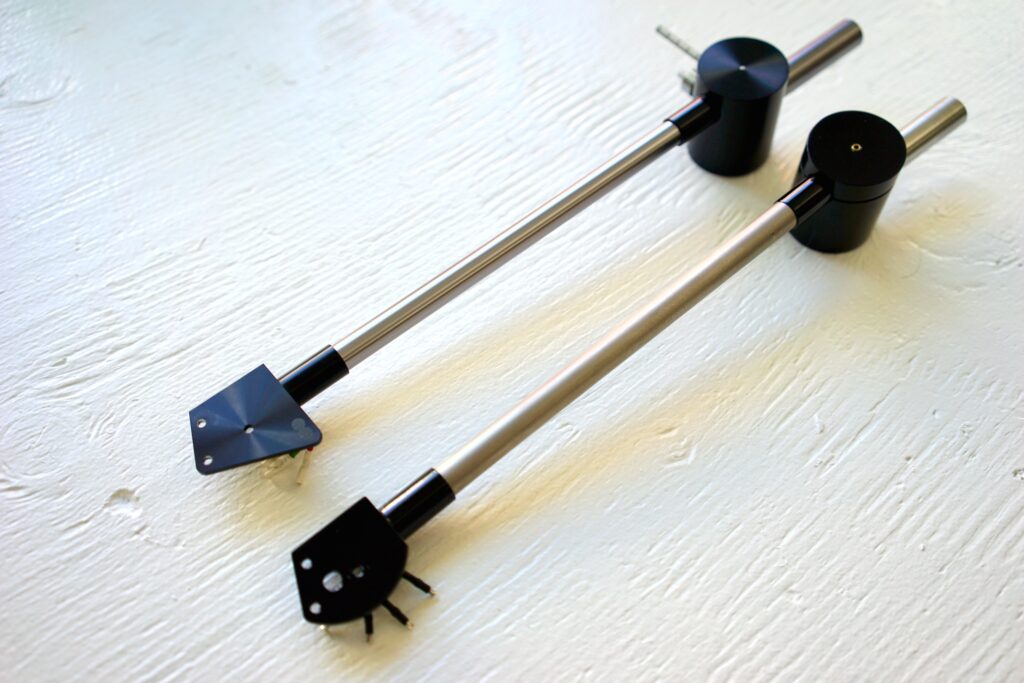
As you can see in the photo above, the Javelin (right) looks an awful lot like an Aro. This gets us into tricky ethical territory, as with the Greenstreet “Klone” subchassis I’ll review in my next posts, and which is basically a direct ripoff of a Linn Keel. Neither is a licensed product. The difference is that Naim decided to discontinue the Aro in 2006, whereas the Keel is still produced. And Roger made numerous updates to the Aro, whereas the Klone is essentially just a much cheaper Keel.
There is a long essay about the Javelin on the Tiger Paw website, on which Roger, the designer, explains that his design aim for Javelin was to do for the Aro what the Linn Ekos SE did for the Ekos. He’d been listening to an Ekos SE and was impressed by the update Linn had managed over what was already an excellent tonearm. He heard an Aro — long since discontinued — and wondered what Naim would do to it today.
Visually, the only obvious differences between the two arms are the headshell shape (I personally can’t decide which I like better) and the finish on the black parts (black anodizing on the Aro; shiny black paint on the Javelin — again, I’m torn as to which I like better).
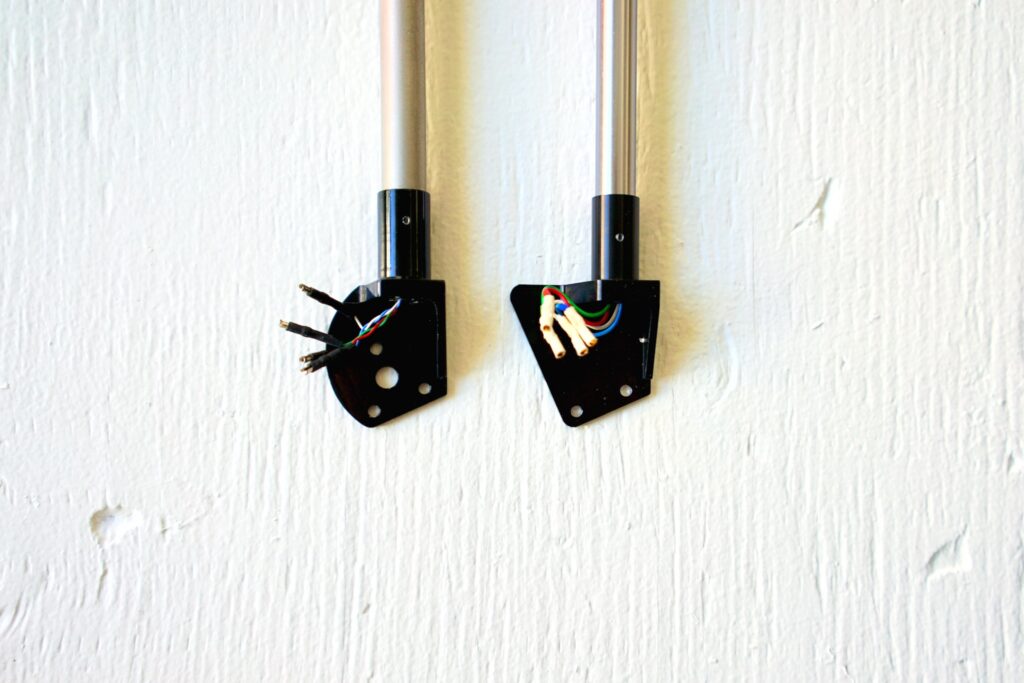
If you dig a little deeper, the differences are actually quite substantial. The main ones are as follows:
- The Aro has an aluminum arm tube, which is glued to the head shell and the arm cup. The Javelin has a titanium arm tube, which is press-fit (not glued) to the head shell and the arm cup. You can see the Ekos SE influence in the decision of titanium. The press-fit was apparently a happy accident resulting from some poor machining tolerances on prototypes, which left no room for glue but sounded better when mashed together anyway.
- The Aro does not allow any adjustment of overhang or alignment: it just has fixed holes for your cartridge bolts. In the days of two-piece steel subchassis and MDF armbands, you got +/- 2mm adjustment or so by altering the relationship of the two. But today, if you use a one-piece subchassis/armboard, you’re limited to specific cartridge choices. (Even the Linn Troika that the Aro was designed for isn’t a perfect fit with a 211mm fixed pivot-spindle distance; you want a cartridge with something like 8.5mm between the mounting bolts and stylus tip, like a Dynavector.) The Javelin has fixed holes, but brilliantly incorporates an offset bearing pillar, which allows +/- 2mm of overhang alignment. This is a big deal in the era of one-piece subchassis/armboards, as it allows you to actually use the cartridge you want to use.
- The Javelin has a revised anti-skate mechanism: a weight that rotates on a bearing attached to a pillar, which means that it provides progressively more anti-skate as the needle moves through the side, which is what you want.
- The Javelin uses an offset counterweight that doubles as as a way of setting azimuth — whereas the Aro has a separate azimuth weight on the side of the arm cup.
- The Javelin has a different cable arrangement; whereas the Aro tonearm lead disconnects at a small plastic terminal at the base of the arm cup, the Javelin lead runs through into the deck to a special terminal that you need to mount to the plinth. This has some drawbacks, making it harder to remove the arm for VTA adjustments and other needs, but does make the “cable dressing” much neater, presenting less of a challenge to the LP12’s suspension.
- The Aro famously does not have a cueing device, substituting instead a stylish but less practical horizontal bar mounted on the armboard. I’ve actually gotten very used to manual cueing, so this is no longer the big deal to me that it once seemed. But anyway, the Javelin has a cueing device — I believe it uses a standard Rega arm lift mechanism — incorporated into its base, and also has a clever arm lock feature to prevent damage when you’re transporting the arm.
You can see detailed shots of all this in my Javelin Setup Guide (forthcoming).
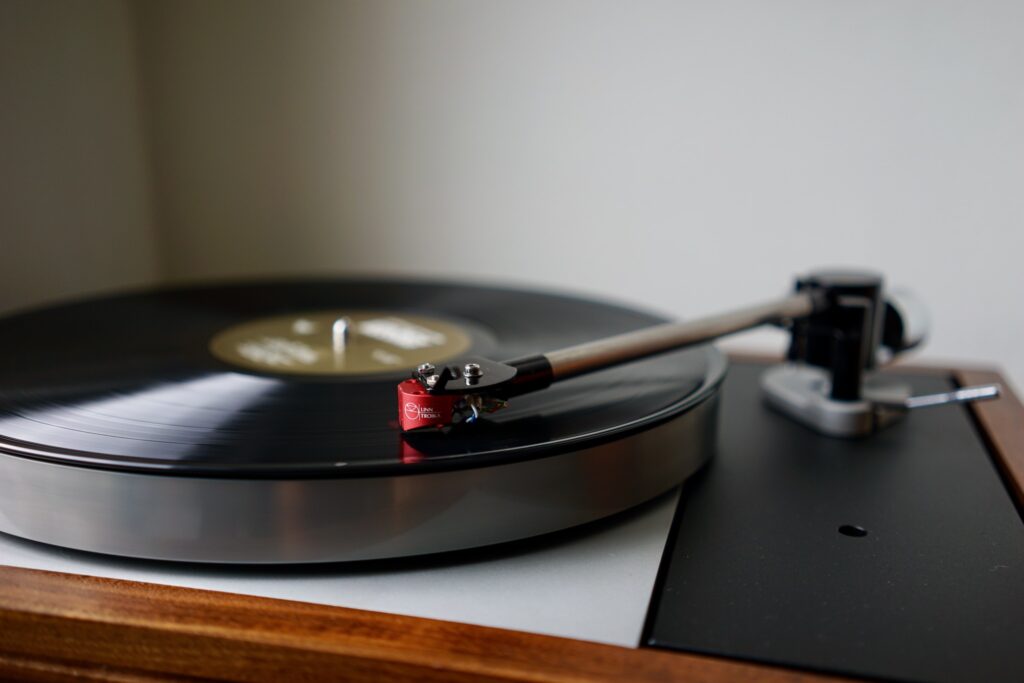
Why did I want a Javelin? Because I love unipivots (like the Nima I started this LP12MF with). Because I think the Aro is the coolest-looking tonearm ever made — maybe one of the coolest looking things of any kind ever made. Because I love Tiger Paw stuff. Because I wanted all the Aro beauty with some added functionality and a bit of titanium.
There were so few made because Tiger Paw closed up shop shortly after the arm was introduced in 2018. The circumstances surrounding this remain somewhat mysterious. But the fact is that only 20-40 of these were ever produced, despite gushing reviews from all early users (notwithstanding some quibbles about minor functionality issues — about which see my forthcoming setup guide!). They sold for £1800 new — just a bit more than what a used Aro in excellent condition goes for, and a lot less than an Ekos SE.
Tracking down the Javelin
There’s been a bunch of buzz lately about Linn’s latest bearing, the Karousel. I’m having a hard time sharing the enthusiasm, as I can’t really understand what is actually new or different about it (except for the threaded body and the big single screw — but, big deal!). But I did perk up when I heard that the Karousel would be incompatible with another Tiger Paw product, the Tranquility magnetic bearing support system co-designed by my internet friend Mark/@YNWaN, who runs my favourite hifi forum, AudioFlat. I figured this might mean a flood of Tranquilities on the market from upgraders, so I had my eye out.
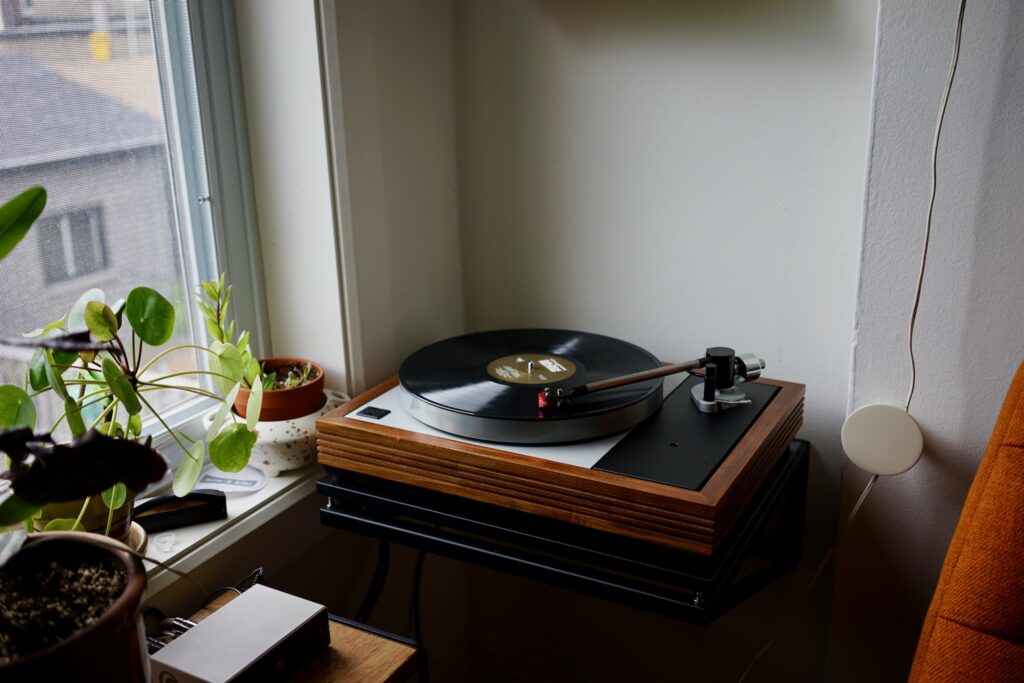
Acting on a tip from @FireMoon on pinkfishmedia, I saw that a shop in Colorado — The Audio Alternative — was clearing out brand new, unused Tranquilities for a very reasonable price. I got in touch, and in passing asked if they happened to have any other Tiger Paw stuff. Then the answer came back from owner Rick Duplisea: he also had two Javelin demo arms.
Two Javelins! I was pretty I’d never even see one with my own eyes. The price was very good — less in USD than it initially sold form in GBP, and less than I paid for my Aro. I knew @YNWaN had moved on from an Aro to a Javelin, so I asked him if I should jump on it, and he assured me that I should. I promised myself I’d keep whichever of the two I liked best and sell the other. I placed my order. (I also made a new audio friend by passing on the tip to another desperate Javelin-seeker. It went to @VTA in Portland; he can also be found at AudioFlat.)
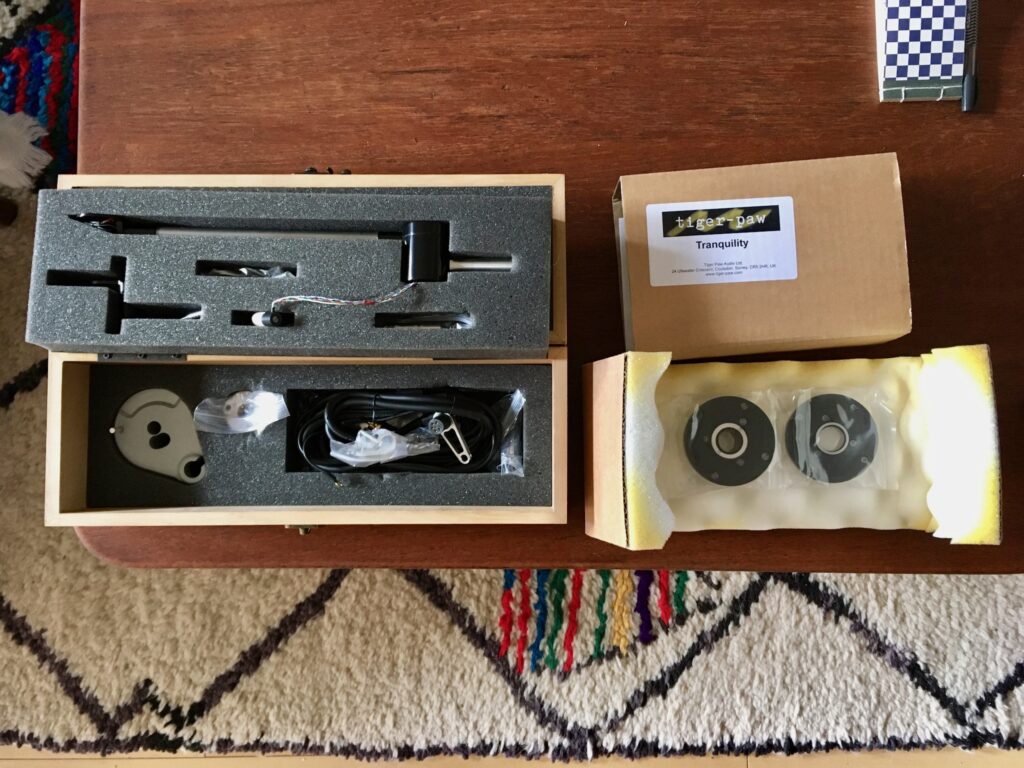
Somewhat complicatedly, I had to send a money order to pay for the Tranquility and the Javelin. Then, to save on customs, I had to have it sent to a friend in California and then on to me. It all required more patience from me than I’m used to showing. But eventually they arrived: two more Tiger Paw products, one as rare as hen’s teeth, the other rarer.
Notes on casual listening
There was little “casual listening” during this round — or at least not much that I took notes on. Instead, I was fiddling obsessively non-casually with VTF and VTA (so much work with the Javelin!!!), trying to figure out the anti-skate mechanism, trying to get on to the next round to bring this cursed LP12MF to a conclusion!
The one and only album on which I made “casual listen” notes was the Giles Martin Abbey Road. I put it on to see how the Javelin did with Ringo’s drum solo on Side B, which is an excellent test of “roundness” and slam. (It’s not like I need much of an excuse to listen to Side B of Abbey Road, though.) Well, according to my notes, the Javelin “killed it.”
Test tracks
1. The Beach Boys, “I Know There’s an Answer,” Pet Sounds (1966)
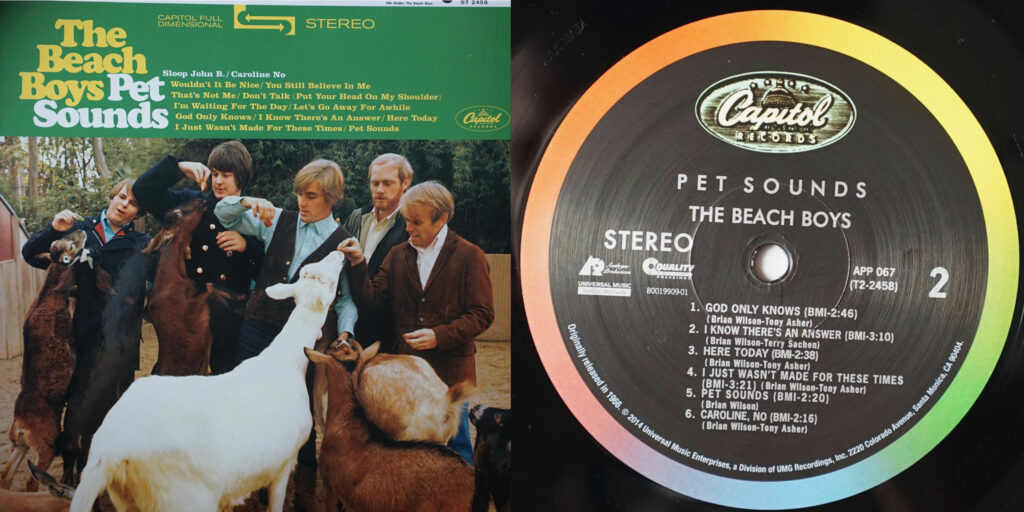
Full digital. Okay, I’ve got everything disconnected from the balanced power unit. What does it mean that this doesn’t sound too bad? I’ve been fiddling with VTA and VTF all day and driving myself nuts and honestly not really making things sound any better. So lingering in the back of my mind is the fear that the Javelin doesn’t sound better than the Ekos (which I’ve just sold!), or maybe even sounds worse… Anyway, this sounds okay, though the shakers are indeed sloppy and the timpani are shamefully flat. Excited/terrified to switch over to vinyl…
Full vinyl. Well, thank God, that sounds amazing. Full, rich, wide, deep, soaring. Space, detail, and power are the things that stand out — a rare combination. The bass is beautiful and deep, but is not overpowering the presentation. This feels more defined on the high end with better focus and precision than the Ekos (I mean, as far as audio memory goes). Triangulating the difference through the comparisons to digital will be more useful…
Slight delay. Sweet Lord. This really has gotten better. ASTOUNDING force on the bass and INCREDIBLE detail and snap on higher-end details. So much information going into my ears. The digital is truly, shamefully awful in comparison. It’s nuts that I thought it sounded okay a moment ago… Digital has no bass drive, is tinny and hollow and flat, with grainy pixellation coloring everything. There’s just so much MORE MUSIC coming through on vinyl here. Wow, wow, wow, wow, wow. (And then the next track starts, and 6-string bass, and the tuba — just absolutely stunning. The Javelin has made a difference!)
S-2-s. Reading through my notes from last time, I know this has gotten better. The detail on the timpani, the definition on the top end, the definition and soundstage in general — and then the same glorious force on the bass. So we need to go up a notch. 50%!
Verdict: vinyl is 50% better (5% improvement)
2. Charles Mingus, “Track B — Duet Solo Dancers,” The Black Saint and the Sinner Lady (1963)
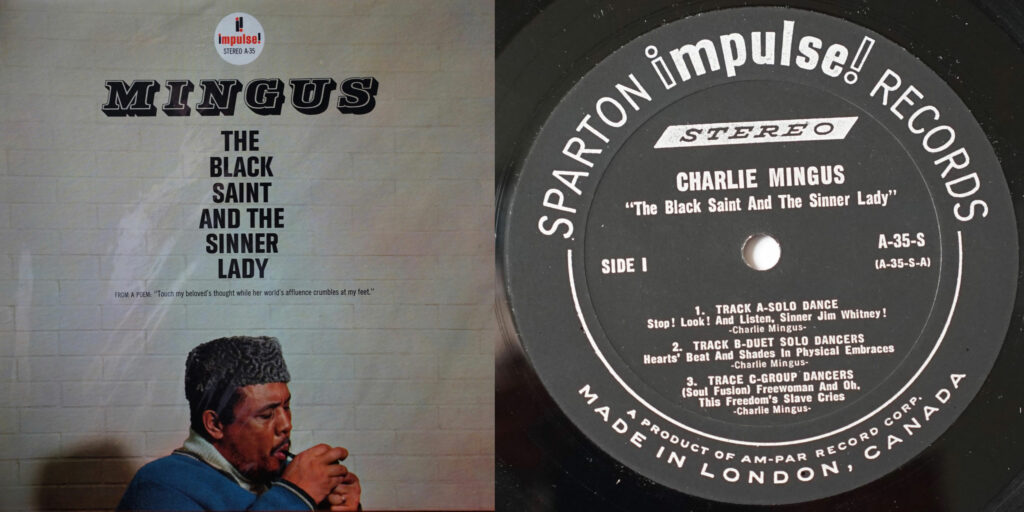
Full digital. I am in full agreement with myself from last time. This sounds horrible. Thin, with horrible left/right panning, all harsh and glassy.
Full vinyl. Okay, definitely not as “soft” or “smooth” as my notes from last time suggest: the Javelin’s character is different. But new levels of top-end detail on the cymbals, and then tons of drive and FORCE on the sax breakdown, and tremendous texture on all the reeds. I think it’s pretty simple to characterize what’s happened: the Javelin has added texture, space, and definition. There’s more high-end detail, especially. It has subtracted nothing: the force and drive I loved in the Ekos 2 is still there. I’m totally getting my wish here…
Slight delay. Wow, yes, again, big difference, and very much like what I just wrote. More bass, more drive, but not “smooth” or “relaxed” like it was with the Ekos: it stings when it needs to here. The textures are the particularly amazing thing. When the cordy sax is blowing, I feel like I can hear six or seven different instruments all tied up into a knot. (That’s a good thing.). But again, not as big of a difference as with The Beach Boys. Indeed, I hesitate to even go to 45%, though I strongly suspect this is better than last time…
S-2-s. No, the differences come across more clearly in direct comparison. There is somehow no middle to the soundstage on digital: it’s all on the sides. The cymbals, which I know had been quite buried in the mix on the Ekos, ring very clearly on the Javelin. The slam is incredible when everyone is blowing hard, the soundstage is incredibly wide and really nicely defined. It’s got to be 45%.
Verdict: vinyl is 45% better (5% improvement)
3. The Pentangle, “Let No Man Steal Your Thyme,” The Pentangle (1968)
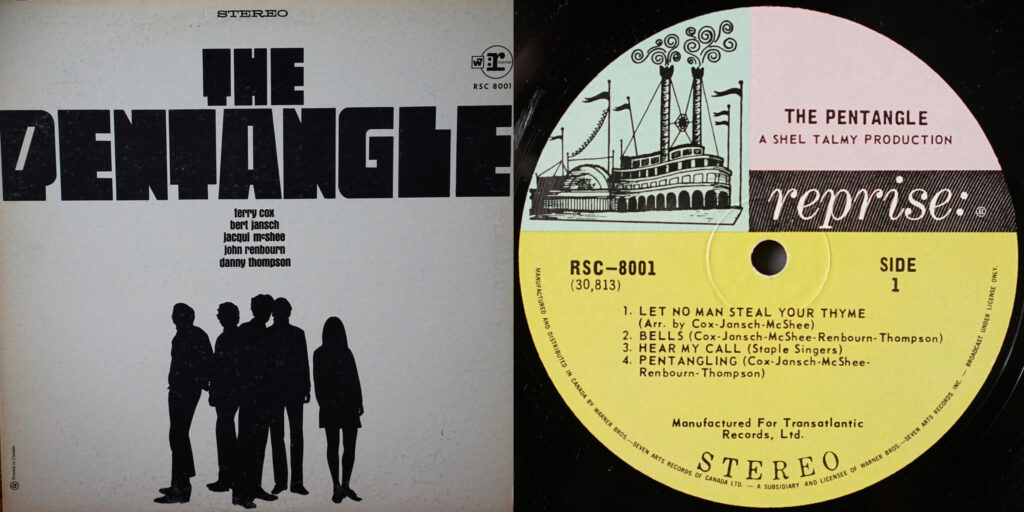
Full digital. This one doesn’t sound too bad. But I worry for it: it’s such a texture track, and all those snappy acoustic guitars are so nice and sharp — all of this seems like it will really play to the advantage of the Javelin, which excels in all those areas. This track feels a little overly bright, but really not so bad. Excited to hear the contrast!
Full vinyl. I’m floored. The definition on the drums, the space and tone of the vocals, the snap of the acoustic guitars — it’s utterly crazy how this now sounds compared to how I first heard it on my initial LP12 setup, where it was grainy and undefined. Oh, wow, in the breakdown, the tone of the acoustic guitars and the echoes in space — they’re so amazing that you barely even hear the rim hits and the bells that previously attracted so much attention. (Notably, the acoustic bass on the next track jumps right out as sounding amazing. Another big improvement. The Javelin is crushing it…)
Slight delay. This has gotten a LOT better on vinyl. Space, detail, texture. The major differences are the detail and precision on the drums in the right channel and the acoustic guitar in the left channel. I’m hearing a new instrument I never perceived before — oh, I guess it’s the bass being bowed way up the neck, sounding like a cello. Much more depth and force here, too. 35% for sure.
S-2-s. Conveniently, I got the timing exactly right and the levels are totally equal. The differences are massive. So much confusion and glare on digital, that just totally recedes on vinyl. The Javelin has taken a fairly “meh” pressing and made it sound absolutely magical. Switching back and forth during that “cello” part, it’s really amazing: it’s just not there, buried behind the bells. This also shows the pretty amazing way that the Javelin has added a ton of detail and top-end resolution without making things harsh or unpleasant, which they most definitely are on digital. That’s an amazing, and very large improvement.
Verdict: vinyl is 35% better (10% improvement)
4. Mariah, “Shinzo No Tobira,” Utakata No Hibi (1983)
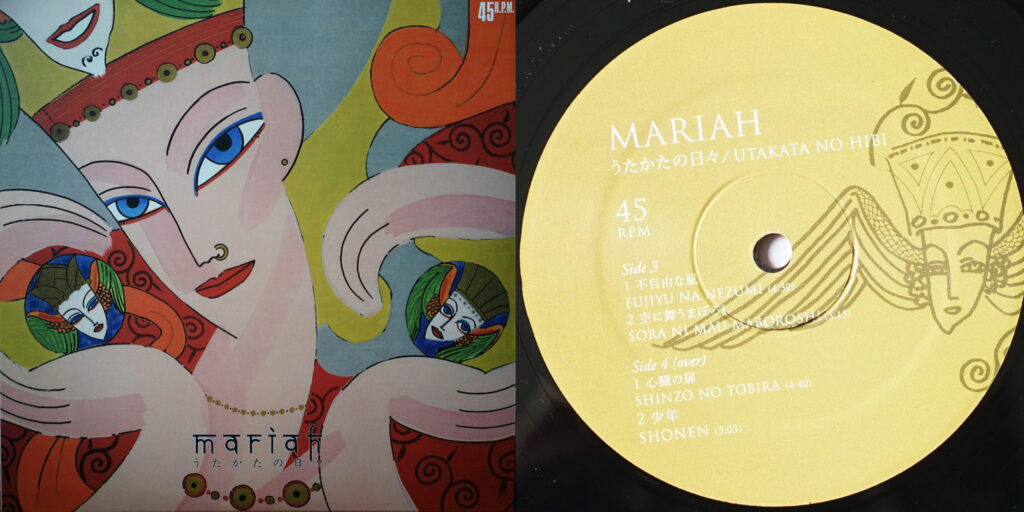
Full digital. I haven’t listened to any vinyl today — I’ve been working out in the garage, to which I have moved my Vidar/LS50 loudspeaker setup and have been listening very happily, wondering why I do so much headphone listening when loudspeakers are so amazing at projecting a sense of space… But then I started this track and immediately loved the detail and resolution of the HE-1000 headphones. This track sounds really good. Shakers sound crisp, bass sounds a little floppy but not so bad. That all just means I’m about to be blown away by vinyl, though, I hope…
Full vinyl. Hmm, right off the bat, I’m not absolutely blown away. I do feel the kick drum more than on digital, but I don’t think as nicely as with the Ekos. There is definitely a hell of a lot of bass here, maybe too much (the same thing I said last time, with the Ekos). When the vocals kick in things get much more exciting: clarity, tone, rightness… The analog synth breakdown is fun, but not absolutely blowing me away. I complained of harshness on the snare last time, which I’m not getting here. I’m just not being thrilled.
Slight delay. Bass is definitely much more present, “juicier,” more enjoyable on vinyl. Wow, it’s really pretty massive when you compare it back to back with the digital. But I don’t think it’s too much bass after. It’s interesting how the advantages of the vinyl presentation come out so much more clearly when you do a direct comparison. Space, force, the naturalness of the vocals. I think there is a slight “hardness” here — maybe on the impact of the snare, or the actual impact of the bass-synth sound? Yeah, it would be nice if that was in better focus. A lot less impact on digital, much less engaging, and the tones are wrong — particularly in the treble. I wouldn’t say this is any better than last time. Still 35%?
S-2-s. On vinyl, you can really feel things striking. The bass impact when that kicks in is really remarkable and much, much better on vinyl. Digital does indeed sound “shameful,” as last time. On the synth breakdown, vinyl is maybe a touch too “edgy” in comparison to digital — it’s hyper-detailed, it demands your attention, but sometimes can be a little too much. The “too much” oddly here is both at the low end (SO much bass) and in the sharpness of the snares and higher-pitched synths. Very possible it’s in the recording and the Javelin/Troika are just picking it up…
Verdict: vinyl is 35% better (no improvement)
5. Joy Division, “Atmosphere,” 12″ single (1980)
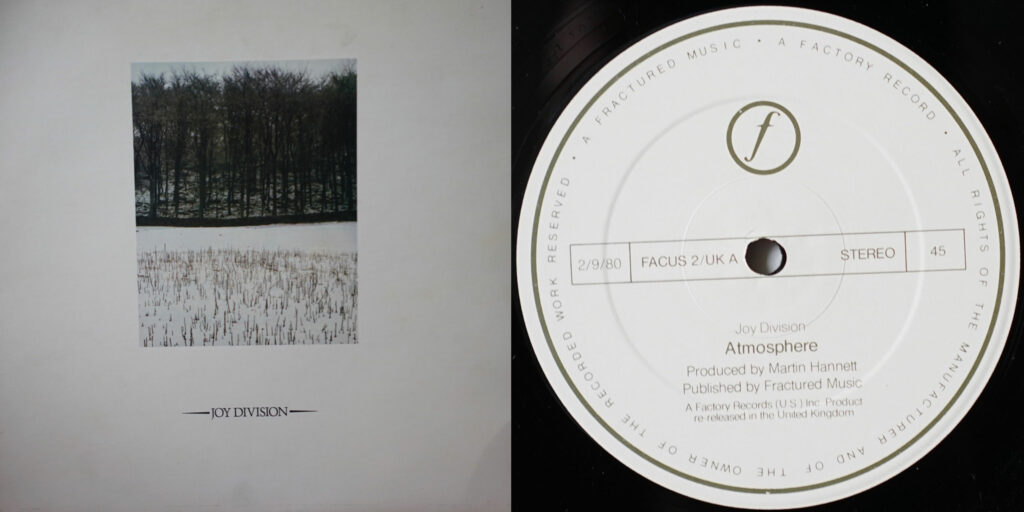
Full digital. I always look forward to this track. Very familiar experience on digital: a bit flat, not nearly as engaging as I know it can be on vinyl.
Full vinyl. Absolutely amazing. Incredible, incredible impact on the Toms. You really feel it. Amazing texture. Behind the incredible dynamics, maybe just a little bit of hardness, a bit of iciness. A touch more warmth would be nice. But of man, the impact, it’s really amazing. This has to be the best I’ve heard this.
Slight delay. Wow. Last time, it was space that really stood out. That’s not really what I’m hearing here — it’s more the life, resolution, realism of that hand drum. And then the fullness of the sound and crazy impact of that floor tom. For sure 35%.
S-2-s. Nah, the life on that drums, the thickness and impact of the drums — it’s better than last time. Reading over the notes confirms it. We’re up to 40%. Not that I can’t imagine a better presentation — one subtracting some of the “hardness” I’m getting here…
Verdict: vinyl is 40% better (5% improvement)
6. Low, “Just Make It Stop,” The Invisible Way (2013)
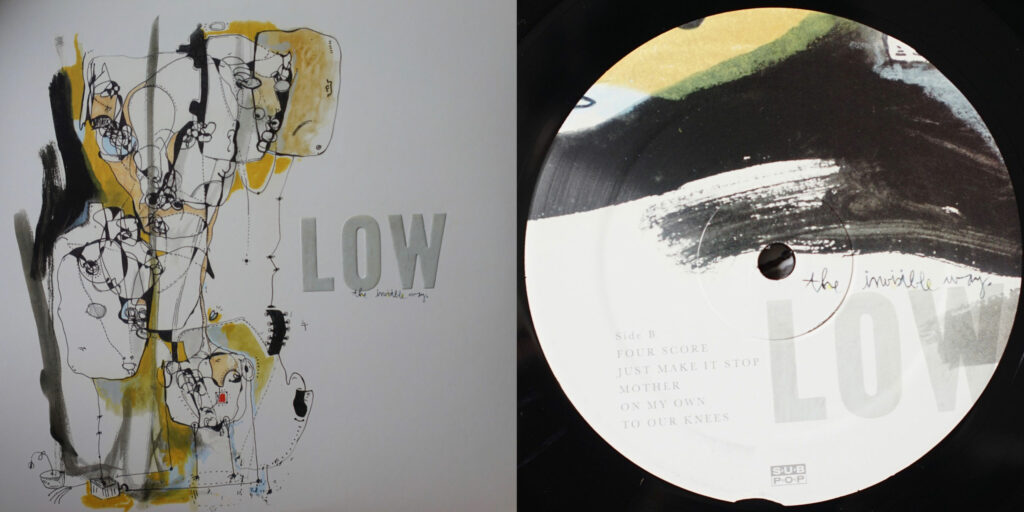
Full digital. It’s strange how different my reactions are to this track on different weeks. Now, it sounds veiled, with really tizzy cymbals. Last week, I thought they sounded fine. Probably just subjectivity at play, but I do wonder if the quality of AC could have something to do with it… Anyway, I’m having a very underwhelming experience with this track on digital tonight. Lack of focus in the soundstage, no exciting textures, no tones that strike my ears and brain as particularly true or interesting.
Full vinyl. Everything is just massively better. Cymbals are beautifully textured, Mimi’s voice is crystal-clear, the instruments are all perfectly placed in the soundstage. Really nice deep bass on the palm mutes. And the piano is really clear here, both spatially and tonally. Surely the best I’ve heard this. Hmm, Mimi’s voice loses a bit of focus and gets a little grainy during the loud part. But the banging barroom piano is very clear and has lots of impact. The quiet part is just gorgeous with detail and textures.
Slight delay. Wow, this one has leapt ahead. It sounds amazingly good on vinyl and just terrible on digital by comparison. Incredible delicate fine detail like the cymbal overlaid with massive thudding palm mutes on vinyl; then a gross, weak, nasty, splashy, thin, dead, pixellated presentation on digital. Easily 40%. The clearest differences are in the barroom piano. Flat and two-dimensional on digital.
S-2-s. Yep, it’s all true. Definitely 40%. Digital sounds utterly horrible. The cymbal in the quiet part at the end is barely audible on digital and is beautifully defined and tonally right (you know, it sounds like metal being struck!) on vinyl.
Verdict: vinyl is 40% better (5% improvement)
7. Yo La Tengo, “Stockholm Syndrome,” I Can Feel the Heart Beating as One (1997)
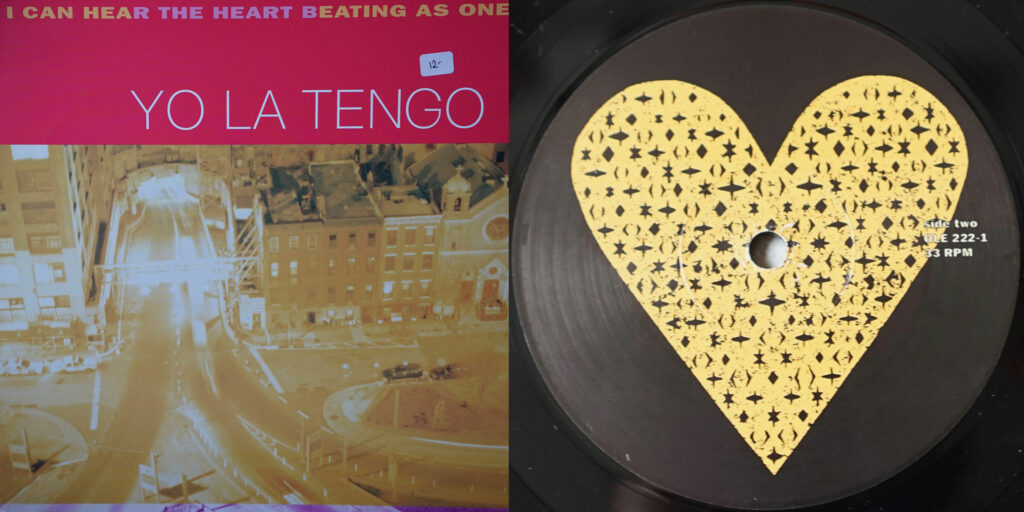
Full digital. Can’t sugar coat this: this sounds awful. It’s completely flat and limp. You have to turn it up really loud to get any drive or snap out of it, and then it’s really tinny and unpleasant. Horrible.
Full vinyl. Still not an overwhelming sonic experience, but a whole lot better than digital. I can feel more than hear the kick drum — I think it could be in better focus. But the acoustic guitar sounds very nice. Looking forward to the comparisons…
Slight delay. This track has lost a little something this round. Yes, way more drive, force, juiciness, texture on the guitars… but not quite as much clarity on James’s vocals as last time, and a hint of hardness. More like 35%?
S-2-s. Yeah, vinyl has more drive and force, but there is a bit of “congestion” around James’s voice that takes something away. Still much better, but I’d say more like 30% even. I’m tempted to say VTA, but this VTA has worked really well for all the other tracks, so… hmmm.
Verdict: vinyl is 30% better (15% regression)
8. The Beatles, “While My Guitar Gently Weeps,” The White Album (1968)
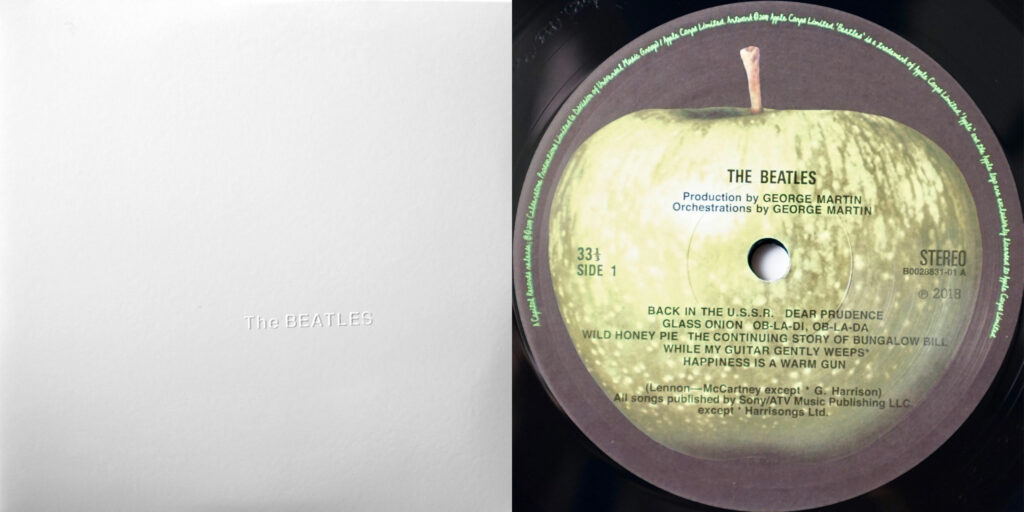
Full digital. I agree with my notes from last time: this hurts to listen to.
Full vinyl. Slam, slam, slam. If anything, I’m getting more kick from this track with the Javelin than the Ekos. That kick drum is pretty amazing, and the detail from the clippety-clop and the acoustic guitars is still incredibly precise. So back to the notes from previous days: everything the Ekos had, but more detail. Excellent 🙂
Slight delay. The weird hollow-middle effect on digital, flatness, death. Width, impact, detail, slam on vinyl. Answering my notes from the last listening test, no, I’m definitely not missing bass or dynamics — it’s absolutely all here. Especially bass! (Whew!)
S-2-s. As last time: I wonder at how an album produced and mixed digitally can sound so bad on a 24/96 digital transfer and so much more full of life on vinyl. DACs, I guess.
Verdict: vinyl is 40% better than digital (no change)
9. Dungen, “Panda,” Ta Det Lugnt (2004)
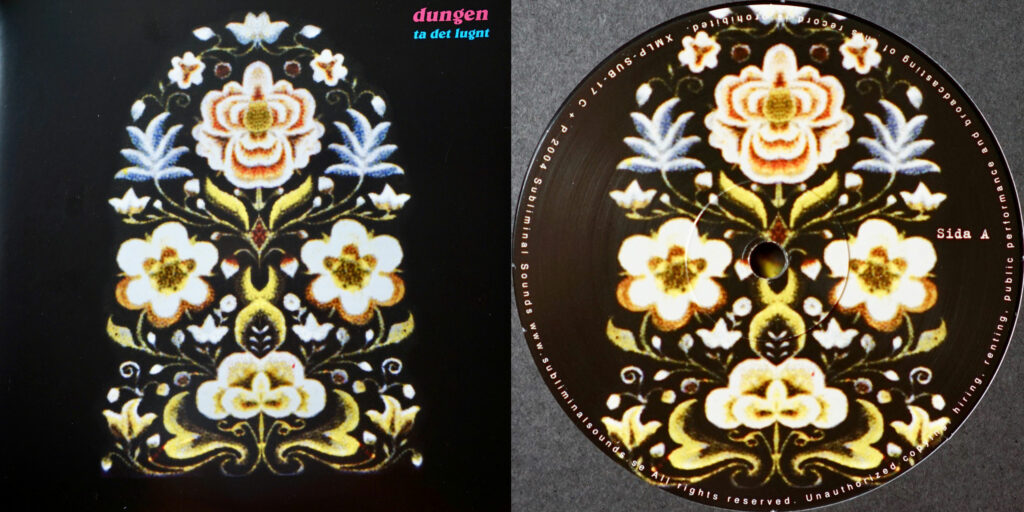
Full digital. Geez, things aren’t sounding great from digital tonight. This sounds nasty: hissy, all crunched together, with absolutely no impact or roundness on the drums. I wonder if it’s me being a snob, or whether it’s because it’s late and I’m a little tired from a busy day, or because it’s hot in my listening room, or because the power is bad tonight…
Full vinyl. The familiar “aaaah” feeling as soon as I hear those toms. The vocals seem more in focus and natural than usual. The bass is really driving. Really, really thick presentation here with tons of detail. Absolutely loving this.
Slight delay. On naturalness, detail, width, slam, texture, everything — at least 40%. Definitely painful to switch back to vinyl. You need to get the volume up about twice as high on digital to feel any of the same impact and get any excitement out of it.
S-2-s. Excellent for all the reasons described (such a “meaty” presentation) — but no better than last time, judging by my notes. I wonder what explains the tracks that are seeing improvement from the Javelin and those that aren’t. It’ll be really interesting to hear how these sound with the XX-2 and then with the Aro…
Verdict: vinyl is 40% better (no improvement)
10. Julee Cruise, “Rocking Back Inside My Heart,” Floating Into the Night (1989)
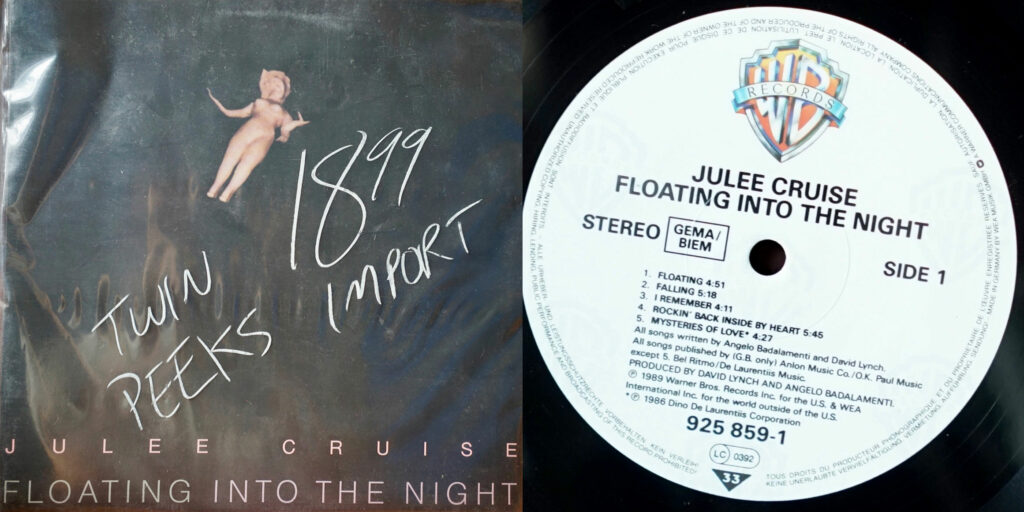
Full digital. Another night of listening begins! Today was the day I got my Yamaha NS-1000M speakers, so I’ve been pretty thrilled by audio today… but music still sounds exceptionally good coming out of my headphones. This track sounds pretty nice: nice full bass, decent palm mutes, Julee’s pretty much in focus… Quite an enjoyable sax breakdown.
Full vinyl. More and more-enjoyable bass; clearer vocals; more space; better definition on the palm mutes. Was the sax breakdown maybe a little mushy?
Slight delay. Yep, lots more clarity, space, detail, and most definitely bass heft on vinyl. I don’t think it’s any better than last time, though. If anything, possible it’s regressed a little? Like, 30%?
S-2-s. Just based on my notes, and my own sense of the switching back-and-forth, I think this has indeed moved a step back. Nicer textures, certainly, especially on the sax, but no more than 30%. The bass-heaviness makes me think I might need to get the VTA just a bit higher…
Verdict: vinyl is 30% better (5% regression)
11. Can, “Halleluwah,” Tago Mago (1971)
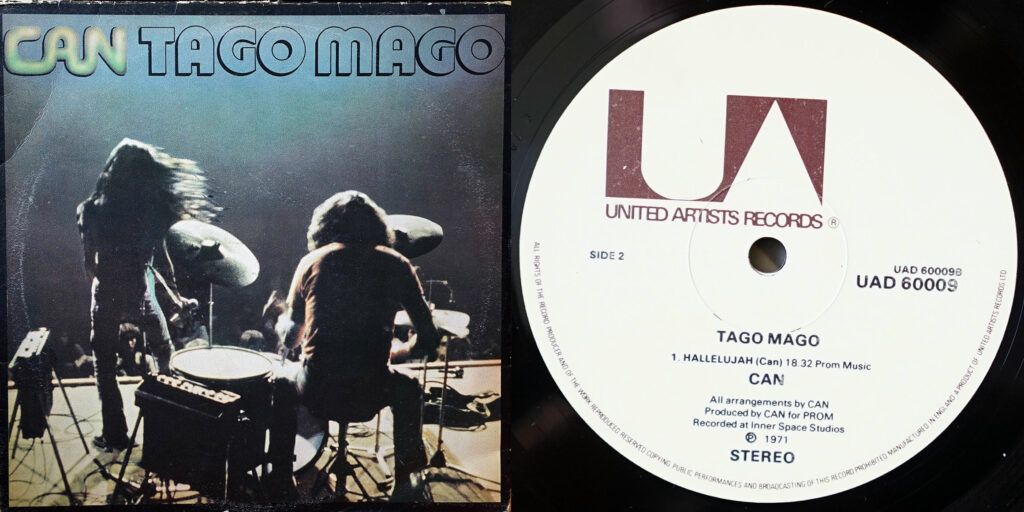
Full digital. Really not too bad. My previous notes complain of tinny, lifeless drums. I’m just not feeling that harsh tonight. I’m grooving right along, and I enjoy the heavy drums when they kick in…
Full vinyl. Way, ridiculously more bass and drive right from the start. Really an astounding difference. And with the massive quantity of bass, no lack of definition on the top end. This sounds amazing — a truly excellent presentation of this song. Good Lord, when the bass really kicks in, it’s totally overwhelming. WOW there is a lot of bass in the Javelin. Insane. Best version of this track, for sure.
Slight delay. Almost unlistenable on digital, with no life and a really painful harshness on the snare (ha! — two minutes ago I said I loved that!). Good Lord, when the bass really kicks in on vinyl, it’s crazy. For one thing, I’m impressed that my headphones can even reproduce bass like that. So this track is proof that the Javelin has bass IN SPADES. And then tons and tons of definition. But good Lord, that bass! The impact is nuts. This is clearly at the 40% better level now. On digital, which I’ve been avoiding, there is just no sense of realism on the drums.
S-2-s. The “rattle” part is very revealing of the differences: the Javelin has like 10 times the bass impact, but somehow also manages to much more clearly convey the dimensions and outlines of the rattles. This is definitely one of the tracks that the Javelin likes best (and vice versa). Interesting that Julee Cruise wasn’t one. But right now I’m spending less time wondering about that and more marveling at how amazingly full and driving this track sounds. I cannot IMAGINE how the XX-2, which is all about drive, will sound with the Javelin!
Verdict: vinyl is 40% better (5% improvement)
12. Bill Callahan, “Javelin Unlanding,” Dream River (2013)
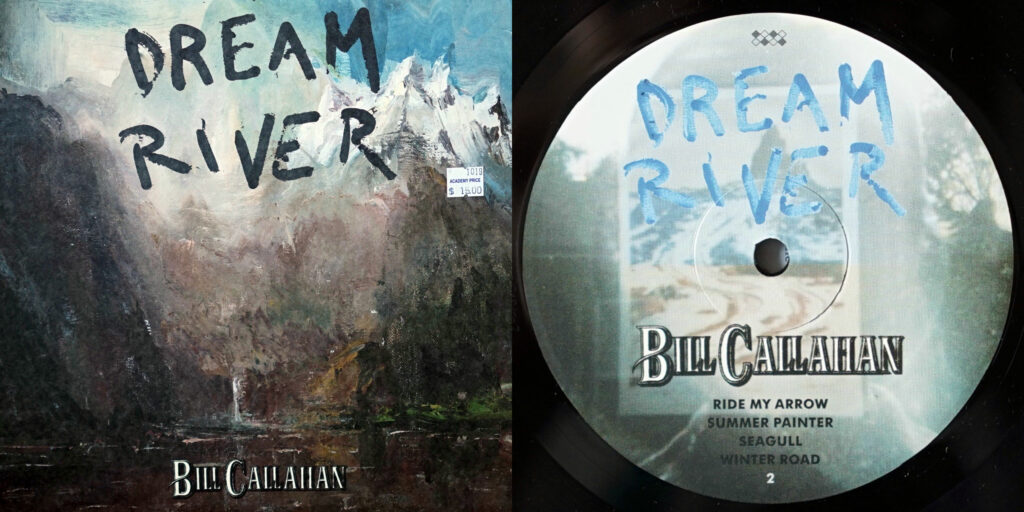
Full digital. As flat and bland a presentation as always, with the hand drums (which are supposed to have life) having no life, and the electric guitar in the chorus— hmm, maybe a little better than I usually hear it, but really nothing much, nothing to get excited about.
Full vinyl. Okay, Javelin. This is song that I sort of picked because it had your name in its title, and I hoped to track you down eventually… And it is, yes, much much much better than digital. Lots of space, lots of nice detail on the hand drums, nuance and clarity on BC’s voice. The heft and thump of the bass guitar feels new, and the guitar on the right channel is as good as I’ve heard. Really, truly excellent bass heft and impact. I think this has got to be the best I’ve heard this.
Slight delay. Haha, appropriately, this is the biggest difference of the evening, by far. The digital is laughably tinny. The vinyl sounds amazing. Javelin and “Javelin” — a perfect match. For sure 40%.
S-2-s. Yep, clear improvement on this track, which I know inside and out. Space, detail, force, heft, clarity.
Verdict: Vinyl is 40% better (5% improvement)
Next steps
As usual, I’m well onto the next steps. I’ve actually already completed the next test as I write this, swapping the Troika for the XX-2. And I’ve got the Aro mounted on my deck, too — which I’m listening to over a new loudspeaker setup in my garage! Exciting times at hi-fi AF headquarters.
